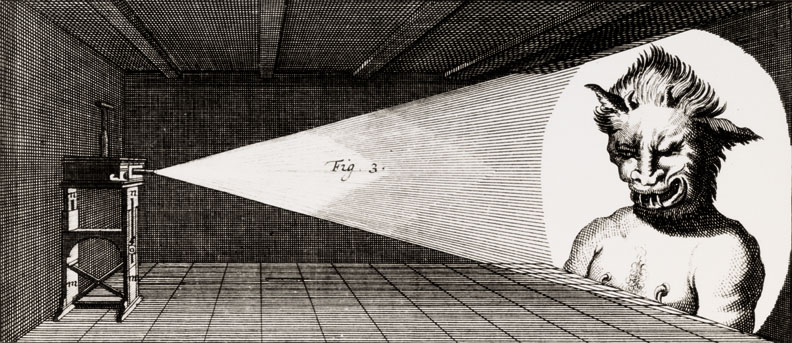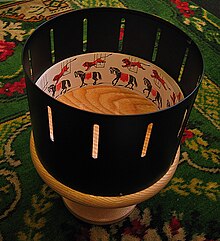Process & Production: Pre Film
Thaumatrope: The Thaumatrope is an optical illusion toy, invented in the Victorian
times by either John Ayrton Paris or Peter Mark Roget. Both inventors
often get credited for its creation.
 Typically, it's made from a circular piece of card that has an image on
each side. For example; a bird on one side and a cage on the other.
It
has string at each side of the card that is twisted to allow the card to
spin around quickly once pulled, and when its spinning it displays the whole image, creating
the illusion of the bird being in the cage.
Typically, it's made from a circular piece of card that has an image on
each side. For example; a bird on one side and a cage on the other.
It
has string at each side of the card that is twisted to allow the card to
spin around quickly once pulled, and when its spinning it displays the whole image, creating
the illusion of the bird being in the cage.
 The reason behind seeing both of the images in one is because of 'persistence of
vision'. Persistence of vision is the delay between what
we see entering the eye and reaching the brain, leaving use to see both
images at once.
The reason behind seeing both of the images in one is because of 'persistence of
vision'. Persistence of vision is the delay between what
we see entering the eye and reaching the brain, leaving use to see both
images at once.
Flip Books: A flip book is a book
with a series of pictures that vary gradually from one page to the next,
so that when the pages are turned rapidly, the pictures appear to
animate by simulating motion or some other change. The first flip book appeared in September 1868, when it was patented by John Barnes Linnett under the name kineograph. They were the first form of animation to employ a linear sequence of images rather than being spun in a circular way.

Magic Lantern: The magic lantern an early type of image projector developed in the 17th century and it was an early predecessor to the modern projector.
 The Zoetrope: The Zoetrope also known as the 'Wheel of Life' was another optical toy invented around 1833 by William Horner. It produces the illusion of motion from a rapid succession of static pictures from the use of slits cut vertically in the sides.
The Zoetrope: The Zoetrope also known as the 'Wheel of Life' was another optical toy invented around 1833 by William Horner. It produces the illusion of motion from a rapid succession of static pictures from the use of slits cut vertically in the sides.
On the inner surface of the cylinder is a band with images from a set of
sequenced pictures. As the cylinder spins, the user looks through the
slits at the pictures across. The scanning of the slits keeps the
pictures from simply blurring together, and the user sees a rapid
succession of images, producing the illusion of motion.
The Praxinoscope: The Praxinoscope is an improvement to the Zeotrope. It was invented in
1877 by Charles-Emile Reynaud. It worked a similar way to the Zeotrope by using a strip of images places inside a spinning
cylinder, but as opposed to using slits it worked through the use of
mirrors in the centre allowing the pictures to appear more still in
their position as the wheel turned. he viewer could look at the
reflection in the mirror rather then through the narrow strips as they
spun the wheel.
 Typically, it's made from a circular piece of card that has an image on
each side. For example; a bird on one side and a cage on the other.
Typically, it's made from a circular piece of card that has an image on
each side. For example; a bird on one side and a cage on the other.  The reason behind seeing both of the images in one is because of 'persistence of
vision'. Persistence of vision is the delay between what
we see entering the eye and reaching the brain, leaving use to see both
images at once.
The reason behind seeing both of the images in one is because of 'persistence of
vision'. Persistence of vision is the delay between what
we see entering the eye and reaching the brain, leaving use to see both
images at once. 


No comments:
Post a Comment